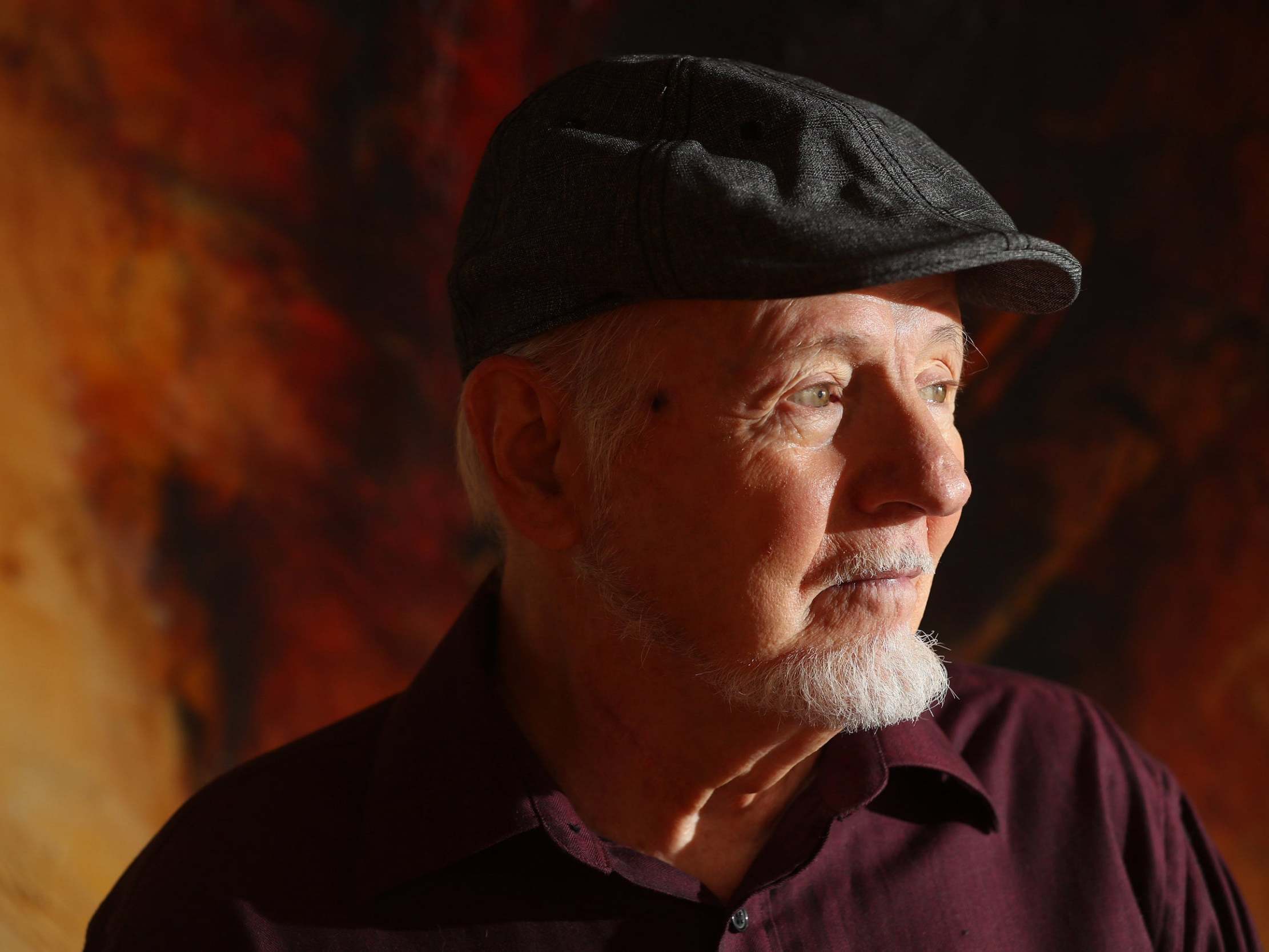Michael Colgrass: Modern classical composer who used humour and headstands to win over listeners
A Pulitzer winner, his early love of jazz informed a groundbreaking approach to percussion, and he was keen to bring younger audiences to classical music

The Pulitzer Prize-winning classical composer Michael Colgrass often highlighted percussion instruments in his works and sometimes stripped to his shorts and stood on his head while carrying the message of music to sceptical students and listeners.
Before becoming a full-time composer, Colgrass was a jazz drummer during his youth in Illinois, then a versatile percussionist who performed with orchestras and in the first Broadway production of Leonard Bernstein’s West Side Story. He composed orchestral and chamber works, operas and other works for chorus and solo vocalists. Amid strong lyrical lines, he often incorporated elements inspired by nature, literature and earlier musical styles.
Colgrass, who has died aged 87, once described how he created his work Letter From Mozart, which was commissioned for an ensemble associated with traditional classical music. “Whatever I write is going to make them unhappy,” he said. “And I fantasised a little bit and thought, ‘Well, what would Mozart do?’” He concluded the great Austrian genius would have said: “Look, why don’t you take a theme of mine and run it through a lot of modern music techniques, and here and there make it recognisable?”
The rhythms were so tricky that the composition required two conductors at its premiere in 1976. The result, The New York Times decided, was “a spot of jazz … succeeded by a touch of serialism, followed by aleatory, by marches, by [tuneful] lyricism, by the percussion effects so beloved by the new generation. It’s all skilful, terribly clever, and without much substance. But fun.”
A year later, Colgrass debuted Deja Vu, a single-movement concerto for four percussion players first performed by the New York Philharmonic. The work featured timpani, vibraphone and a variety of more obscure instruments and percussive effects. This piece was awarded the Pulitzer Prize for music in 1978. Four years later, Colgrass won an Emmy award for a PBS documentary about his music.
In addition to music, Colgrass studied acting, clowning and comic traditions and became interested in hypnosis. (He once hypnotised members of an audience before a performance.) “A really good composer,” he said in 1981, “puts you in a trance and talks to your subconscious mind.”
While speaking to school groups or workshops, Colgrass would sometimes shed most of his clothes, stand on his head, do somersaults and balance on his forearms to demonstrate the connection of the body to rhythm and dance. Students at one urban high school were shocked to silence, he wrote in a 1972 essay, but “by the time the session was over, the wrestling team was dancing to Stravinsky’s Rite of Spring”.
Michael Charles Colgrass Jr was born in 1932, in the Chicago suburb of Brookfield, Illinois. His father, an Italian immigrant who changed his name from Colagrossi, was a professional boxer and later a postmaster.
Colgrass dated his interest in music to 1943, when he saw the movie Reveille With Beverly. The film featured the tune “Big Noise From Winnetka”, in which drummer Ray Bauduc’s thumping rhythm was joined by a driving bass line from Bob Haggart, who whistled a melody. Midway through the number, Bauduc began to drum on one of the strings of Haggart’s upright bass, creating one of the most thrilling and oft-imitated moments in jazz history. “I was more than intrigued: I was overwhelmed,” Colgrass said. “I wanted to do the same thing. I wanted to play jazz.”
He worked as a golf caddie to earn money for his first set of drums, organised his first group at 11 and performed in jazz bands through high school. He did not read musical notation until he entered the University of Illinois, from which he received a bachelor’s degree in percussion performance and composition in 1954. He then served in an army orchestra in Europe.
Colgrass later moved to New York, where he performed with classical and jazz ensembles and was part of the pit orchestra for West Side Story when it debuted in 1957. He had begun to compose music in college and in 1966 wrote one of his best-known works, As Quiet As, which was recorded by the Boston Symphony Orchestra. In 1974, he and his wife moved to Toronto, believing it would be a better place to raise their son.
Colgrass occasionally taught at colleges, but since 1967 he made his living as a full-time composer. He often counselled other aspiring musicians and composers and became a trainer in “neuro-linguistics programming,” a method of developing human potential. He published an autobiography in 2010.
Long concerned about attracting new audiences to classical music, he believed one solution was to invite composers to write works for young listeners.
“A lot of these new compositions,” he wrote in 1969, “would make unusual demands, perhaps using film, dance, lighting effects, even experimenting with a different kind of concert hall. All this would make the symphony orchestra grow with the times and stay fresh, perhaps even be fun as it was to Haydn and Mozart.”
He is survived by his wife Ulla and two children.
Michael Colgrass, composer and music educator, born 22 April 1932, died 2 July 2019
© Washington Post
Subscribe to Independent Premium to bookmark this article
Want to bookmark your favourite articles and stories to read or reference later? Start your Independent Premium subscription today.

Join our commenting forum
Join thought-provoking conversations, follow other Independent readers and see their replies